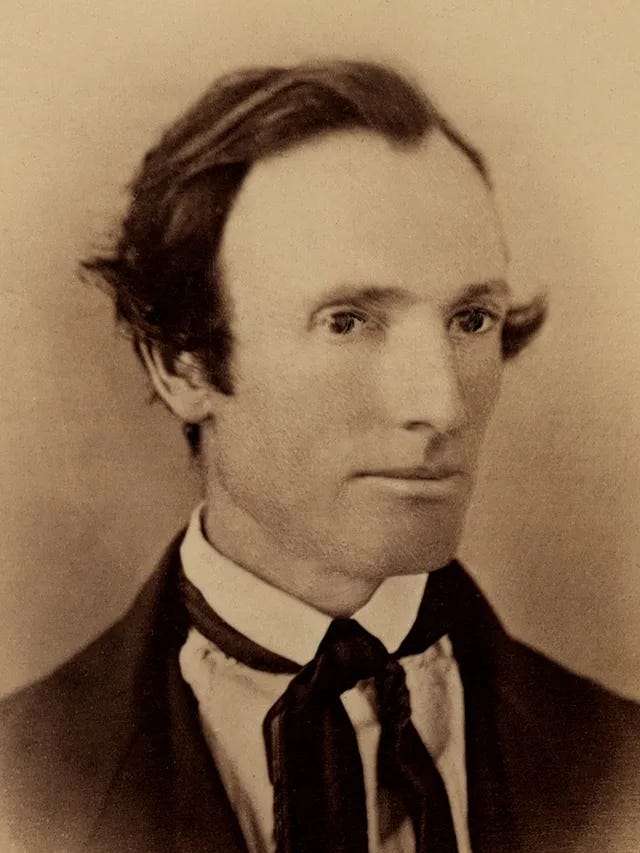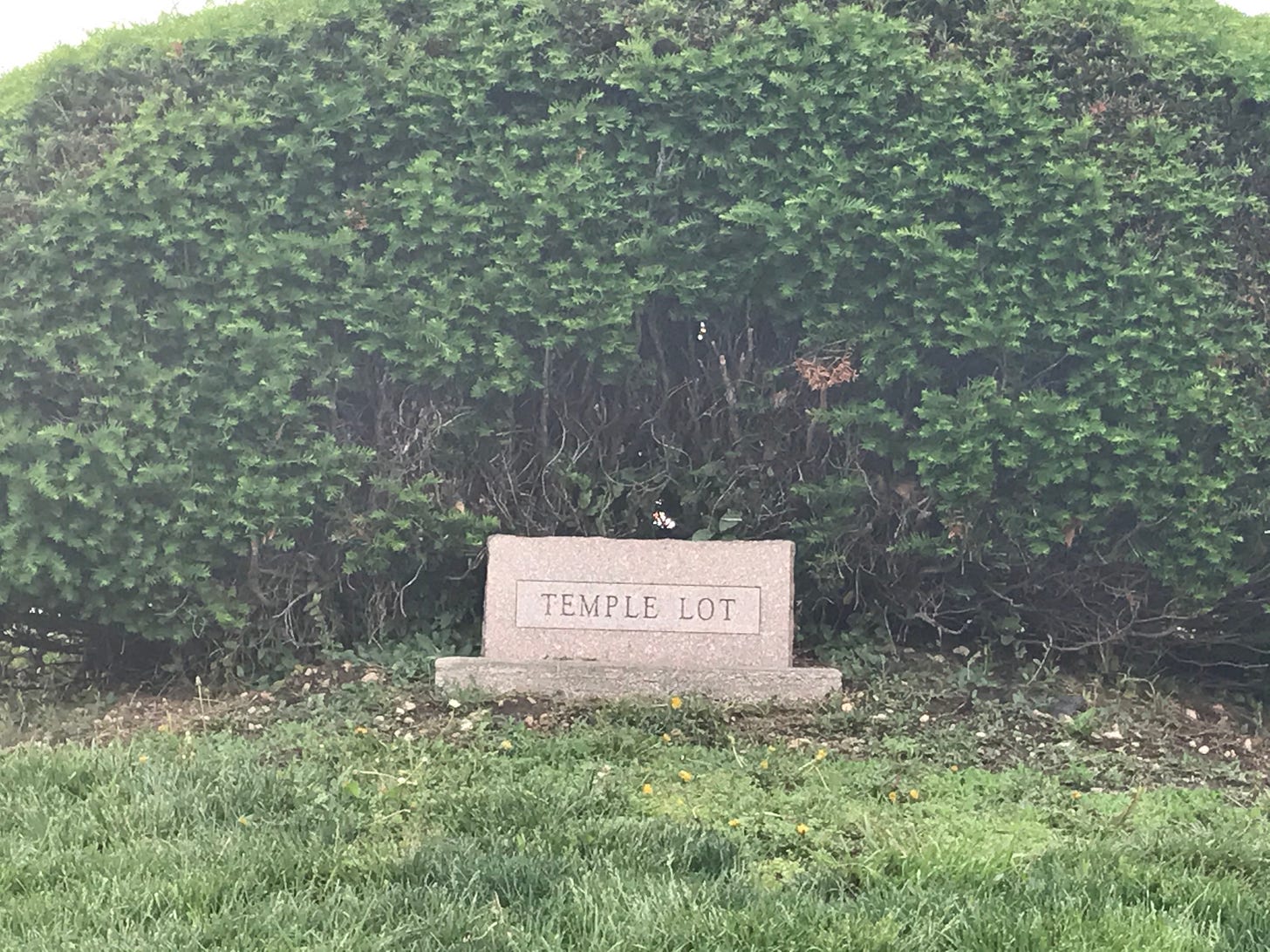The Foundations of Zion and a Mission to the Lamanites
More Reflections on Doctrine and Covenants 28
After settling the Hiram Page seer-stone problem, Oliver Cowdery embarked upon his mission to the Lamanites. Richard Dilworth Rust’s brief account of this mission helps us to understand this significant phase in the history of the growth of the Lord’s Church. As a result of this mission, the Church of Jesus Christ not only expanded in breadth into other regions and territories and among the Native Americans, but it also grew in depth and influence because of new members who joined the ranks, including Sidney Rigdon, Isaac Morley, John Murdock, Lyman Wight, Edward Partridge, and Frederick G. Williams.
Furthermore, the Church expanded into important cities in the continuing Restoration of the Gospel of Jesus Christ, including most notably Kirtland, Ohio, and Independence Missouri.
The Book of Mormon’s primary audience was and is the Lamanites (see e.g. here and here), or in other words, the descendants of the ancient prophet Lehi, the branch of Joseph who was sold into Egypt. The Lord called Oliver Cowdery to initiate the dissemination of the Book of Mormon among the Lamanites. The Lord called Peter Whitmer, Jr. (see also here and here) to accompany Oliver Cowdery, and He later called Parley P. Pratt and Ziba Peterson (see also here) on a mission to the Lamanites as well. (Consider the parallels between the mission of the four sons of Mosiah to the Lamanites in ancient times to the mission of the four who were called to preach to the Lamanites in the early Restoration.)
The four faithful missionaries covenanted with God to preach the Gospel as directed by the Holy Ghost, and they brought with them numerous copies of the Book of Mormon to distribute. Parley P. Pratt’s Autobiography contains an account of his mission, the conversion of his friend Sidney Rigdon in Ohio, and the miraculous growth of the Church in cities such as Kirtland, as Richard Dilworth Rust explains:
This unanticipated success in Kirtland had enormous consequences for the future of the Church. Kirtland soon became an important early gathering place for Church members and would later be the site of the Church’s first temple. The group of Kirtland converts also yielded many early Church leaders. Conspicuous among these, of course, was Rigdon himself, who would later serve as a counselor to Joseph Smith. One new convert from the Kirtland area, Frederick G. Williams, joined the four missionaries on their journey.
One of the main purposes of the Book of Mormon was and is to bring the Lamanites to a knowledge of their fathers and to know the promises of the Lord to them (Doctrine and Covenants 3:20). These promises can be traced through Book of Mormon prophets (see, e.g. 1 Nephi 13:34–41; Enos 1:11–18; Helaman 15:12–13) all the way back to Joseph, Jacob, Isaac, and Abraham. The work that Oliver Cowdery initiated almost two hundred years ago continues today. In fact, I’ve noticed that alert members of the Church of Jesus Christ of Latter-day Saints have been paying special attention to recent developments among the Lamanites, particularly among Native Americans.
When I was a young boy, my brothers and I attended youth camps in Michigan in which we were gathered into separate groups with names of Indian tribes and taught songs for our tribes. For some reason I remember parts of the Chippewa (or Ojibwe) song. Perhaps it is not a coincidence that I recently learned about Chief Midegah who is of the Great Lakes Area Ojibwe, or Anishinaabe people (and who caused a stir in some circles of the Church). I lived in Michigan again during graduate school, during which time I again had the opportunity to visit many areas in Michigan and in Canada that I believe are an important part of Book of Mormon geography.
When I watch this native Hopi prediction or prophesy of what will soon befall us in the United States of America and in the rest of the world, I can’t help but think that the time of the Gentiles has come to a close and that the Lamanites will soon blossom as a rose. In fact, I’ve heard rumors of other records from Native Americans that will soon come to light, further confirming the truth of the Book of Mormon. Whatever the case, it is the dawn of a great day for the Lamanite people.
Oliver Cowdery and his missionary companions established the Church in the Kirtland, Ohio area and paved the way for the Prophet Joseph Smith to go to Ohio in early 1831. Richard Dilworth Rust explains that
Later in 1831, Joseph himself traveled to Jackson County, where he identified the location of the New Jerusalem and, on August 3, 1831, near the Independence courthouse, laid a cornerstone for the temple.18
A couple of years ago I visited Independence, Missouri and the Temple site. I look forward to the time when we will build the city of Zion, the New Jerusalem, as the Book of Mormon and Joseph Smith prophesied, even as I seek to build Zion within my own heart and mind.
In some ironic ways, we have Hiram Page to thank for Oliver Cowdery’s mission to the Lamanites and for Joseph Smith’s revelation to identify the place of Zion. Even though Hiram Page had been deceived by the devil through false revelations from a seer stone (D&C 28:11), a true revelation was given as a result of Joseph Smith’s earnest inquiry for help to resolve the Hiram Page seer stone problem. Thus the foundations of Zion were laid and the Gospel was preached among those who will become the principal builders of the New Jerusalem:
And now, behold, I say unto you that you shall go unto the Lamanites and preach my gospel unto them; and inasmuch as they receive thy teachings thou shalt cause my church to be established among them; and thou shalt have revelations, but write them not by way of commandment.
And now, behold, I say unto you that it is not revealed, and no man knoweth where the city Zion shall be built, but it shall be given hereafter. Behold, I say unto you that it shall be on the borders by the Lamanites.
Thou shalt not leave this place until after the conference; and my servant Joseph shall be appointed to preside over the conference by the voice of it, and what he saith to thee thou shalt tell. (D&C 28:8-10)













